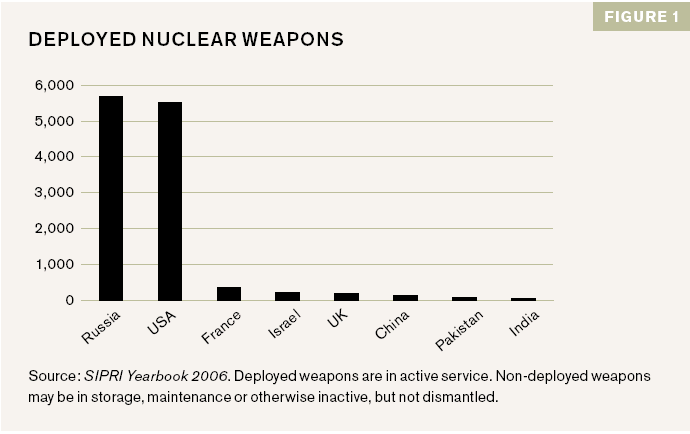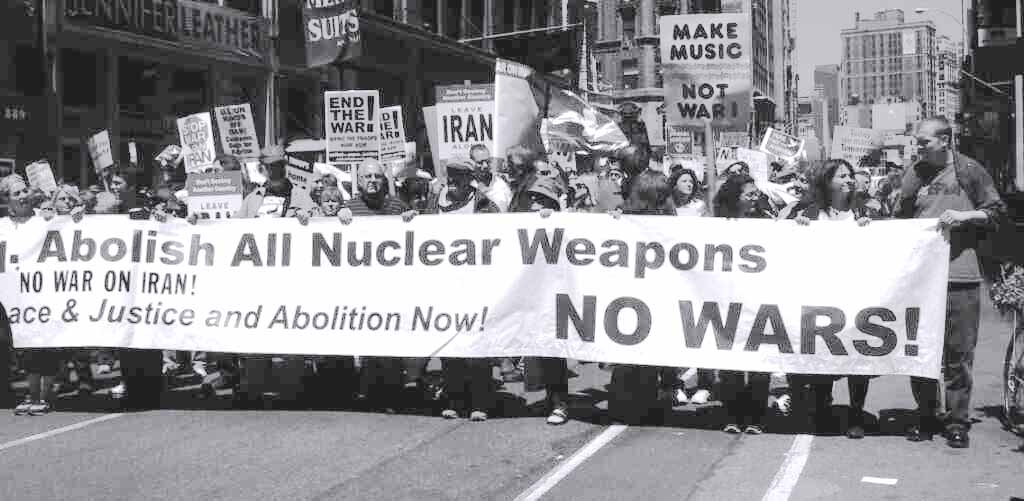Jackie Cabasso
Readers of this blog have been privy to in-depth information and analysis about the Iranian crisis and what it really means, by my colleagues, Andrew Lichterman, John Burroughs, and Michael Spies. You might wonder about the name of our blog, “DisarmamentActivist.org.” We believe that education and critical thinking are essential building blocks of effective activism. But at the same time, while we’ve been delving into the facts and putting them into context, we’ve also been working with our colleagues on plans for action. (Obviously much more needs to be done!) The initial results can be found on the new United for Peace and Justice No War on Iran! No Nukes! campaign pages. There you can sign and send letters to members of Congress and the U.N. Security Council calling on them to oppose military action against Iran, uphold the law, support diplomatic solutions, and put an end to U.S. nuclear hypocrisy. You can also sign AfterDowningStreet’s petition to Bush and Cheney, and find links to additional educational materials and action items. On April 29, under the banner No Nukes! No Wars! we’ll be marching for Peace, Justice and Democracy in New York City, and hosting an interactive No War on Iran! No Nukes! tent in the Peace and Justice Festival. Join our Nuclear Abolition contingent at 20th Street, east of Broadway, starting at 11:00 am (enter from Park Avenue South)!
This recent activity is the result of a steady, patient, behind the scenes campaign. Since late 2002, during the runup to the Iraq war, we’ve been working with U.S. member groups of the Abolition 2000 Global Network to Eliminate Nuclear Weapons to bring nuclear disarmament “home” to the peace and justice movement. In the run up to the U.S. attack on Iraq, premised in part on the wholly unsubstantiated claim that Iraq had an active nuclear weapons program, a new anti-war movement began to coalesce, with a heightened sensitivity to the domestic impacts of the “war on terror,” including attacks on immigrants, and drastic cuts to social services for the poorest members of our population.
The first National Assembly of United for Peace and Justice (UFPJ), held in Chicago in June 2003, seemed like a good opportunity to reclaim nuclear disarmament as a peace and justice issue, and to reintegrate it into the broader anti-war movement. A proposal from Abolition 2000 groups to make nuclear disarmament a UFPJ priority was adopted, with little discussion or controversy. It was striking, however, that several delegates voiced objections to the effect that “nuclear disarmament is the Bush agenda!” This turned out to be the tip of an iceberg, exposing a vast lack of awareness in the new anti-war movement–reflecting the general lack of public awareness–about the realities of U.S. nuclear weapons and their central role in our “national security” policy. And it marked the beginning of a continuing internal education process in UFPJ, the largest anti-war coalition in the country, with over 1,300 member groups. The Nuclear Disarmament/Redefining Security Working Group of UFPJ, which I convene, has been working steadily to raise awareness about the historically unbroken U.S. nuclear threat in the context of an increasingly aggressive, unbelievably arrogant and unilateral administration in Washington.
Now it seems that like it or not, the threatened use of nuclear weapons by the United States against Iran, reported by Seymour Hersh in the April 17 New Yorker, is forcing the still somewhat reluctant anti-Iraq-war movement to come to grips with the prospect of nuclear war. With the risk of use of nuclear weapons climbing towards levels not reached since the darkest days of the Cold War, where is the public outcry? What happened to the massive anti-nuclear movement of the 1980s? Why has the anti-war movement been so quiet about nuclear weapons?
(more…)


